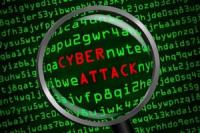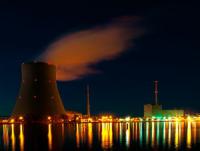-
Rethinking the value of water
Research highlights the accelerating pressure on measuring, monitoring and managing water locally and globally. A new four-part framework is proposed to value water for sustainable development to guide better policy and practice.
-
-
For sustainable wooden skyscrapers, the sky’s the limit
Australia will soon hold the record for the world’s tallest timber office building, built in Brisbane. With the help of the University of Queensland’s new research hub — Australian Research Council (ARC) Future Timber Hub — wooden skyscrapers could become the norm. “This Hub represents an opportunity to transform not just our ability to design and construct healthy, resilient, sustainable tall timber buildings; but to engage and transform the entire industry – from the sustainable forests that provide the raw timber, right through to assembling the building safely on site,” said the Hub director.
-
-
Inaction on climate change has “jeopardized human life”: Report
A major new report into climate change shows that the human symptoms of climate change are unequivocal and that the delayed response to climate change over the past twenty-five years has jeopardized human life and livelihoods. The human symptoms of climate change are unequivocal and potentially irreversible – affecting the health of populations around the world today.
-
-
Evacuating a nuclear disaster area is often a waste of time and money, says study
Over 110,000 people were moved from their homes following the Fukushima nuclear disaster in Japan in March 2011. Another 50,000 left of their own will, and 85,000 had still not returned four-and-a-half years later. While this might seem like an obvious way of keeping people safe, my colleagues and I have just completed research that shows this kind of mass evacuation is unnecessary, and can even do more harm than good. We calculated that the Fukushima evacuation extended the population’s average life expectancy by less than three months. The reality is that, in most cases, the risk from radiation exposure if tpeople stay in their homes is minimal. It is important that the precedents of Chernobyl and Fukushima do not establish mass relocation as the prime policy choice in the future, because this will benefit nobody.
-
-
Radioactive material, leaked from a Russian nuclear complex, detected over Europe
The Russian state meteorological agency Roshydromet today released data which show exceedingly high atmospheric concentration of ruthenium-106 in the area where the Rosatom Mayak nuclear complex, located in the Southern Urals. The late-September leak, initially denied by Roasatom, the operator of the complex, caused the radioactive material to spread over northern Europe, where it was detected by IRSN and BfS, the French and German nuclear safety agencies, respectively.
-
-
Power grid links vulnerable to cascading failures
In North America, a small set of vulnerable patches within large power grid networks is disproportionately responsible for costly cascading power failures, according to a new study. These vulnerable components, the authors say, are typically geographically close and are often located near densely populated areas.
-
-
Russia has been cyber-attacking “U.K. media, telecommunications, and energy sectors”: U.K. cybersecurity chief
Ciaran Martin, CEO of the U.K. National Cyber Security Center (NCSC): “I can confirm that Russian interference, seen by the National Cyber Security Center, has included attacks on the U.K. media, telecommunications and energy sectors. That is clearly a cause for concern — Russia is seeking to undermine the international system.”
-
-
New theory of the opening moments of Chernobyl disaster
Researchers, relying on new evidence and analysis, have come up with a new theory of the opening moments during the Chernobyl disaster, the most severe nuclear accident in history. The new theory suggests the first of the two explosions reported by eyewitnesses was a nuclear and not a steam explosion, as is currently widely thought.
-
-
Russia has been cyber-attacking “U.K. media, telecommunications, and energy sectors”: U.K. cybersecurity chief

Ciaran Martin, CEO of the U.K. National Cyber Security Center (NCSC): “I can confirm that Russian interference, seen by the National Cyber Security Center, has included attacks on the U.K. media, telecommunications and energy sectors. That is clearly a cause for concern — Russia is seeking to undermine the international system.”
-
-
Identifying sources of coastal resiliency
As extreme weather events become more commonplace, regions of the world that get hit the hardest are often left scrambling to put the pieces of their homeland back together. ASU’s Sian Mooney, an economist, recently returned from a trip to Cuba, where the economist attended a tri-national workshop on the theme: “Enhancing Resilience of Coastal Caribbean Communities.” The workshop’s participants have been charged with defining and identifying sources of coastal resiliency and then working to implement them in the region over the next few years.
-
-
Artificially cooling the planet could have devastating effects
Geoengineering — the intentional manipulation of the climate to counter the effect of global warming by injecting aerosols artificially into the atmosphere — has been mooted as a potential way to deal with climate change. Proposals to reduce the effects of global warming by imitating volcanic eruptions could have a devastating effect on global regions prone to either tumultuous storms or prolonged drought, new research has shown.
-
-
Improving sensor accuracy to prevent overload of the electrical grid
Electrical physicists from Czech Technical University have provided additional evidence that new current sensors introduce errors when assessing current through iron conductors. It’s crucial to correct this flaw in the new sensors so that operators of the electrical grid can correctly respond to threats to the system. The researchers show how a difference in a conductor’s magnetic permeability, the degree of material’s magnetization response in a magnetic field, affects the precision of new sensors.
-
-
New Zealand energy firm invests $10 million in Iron Dome maker
New Zealand-based energy and communications infrastructure provider Vector invested $10 million in the Israeli company that developed the Iron Dome. Some of the technologies that power Israel’s remarkable protection against projectiles will be used by Vector as part of its IoT (Internet of Things) approach to optimizing management and control services.
-
-
Sandy five years later. What have we learned?
Five years ago, Post-tropical Cyclone Sandy struck at high tide, driving catastrophic storm surge into coastal New Jersey and New York unlike anything seen before. Thirty-four New Jersey residents lost their lives. Hundreds of thousands of homes and businesses were destroyed, causing over $62 billion in damage. Five years later some areas have recovered. Some have not.
-
-
Nuclear energy programs do not increase likelihood of nuclear weapons proliferation: Study

Contrary to popular thought, nuclear proliferation is not more likely to occur among countries with nuclear energy programs, according to new research. In a historical analysis of the relationship between nuclear energy programs and proliferation from 1954 to 2000, the study finds that the link between the two has been overstated. “The findings suggest that international efforts to manage the proliferation risks of nuclear energy programs have been quite effective,” says the study’s author. “Even when countries become more technically capable of developing nuclear weapons due to an energy program, they can often be restrained by timely intelligence and the prospect of sanctions.”
-
More headlines
The long view
Helping Strengthen America’s Critical Infrastructure
Everyday life depends on a robust infrastructure network that provides access to running water, communications technology and electricity, among other basic necessities. The experts who keep our national infrastructure secure and resilient also need a strong network to share their knowledge and train the next generation of professionals capable of solving complex infrastructure challenges.
AI and the Future of the U.S. Electric Grid
Despite its age, the U.S. electric grid remains one of the great workhorses of modern life. Whether it can maintain that performance over the next few years may determine how well the U.S. competes in an AI-driven world.
Using Liquid Air for Grid-Scale Energy Storage
New research finds liquid air energy storage could be the lowest-cost option for ensuring a continuous power supply on a future grid dominated by carbon-free but intermittent sources of electricity.
Enhanced Geothermal Systems: A Promising Source of Round-the-Clock Energy
With its capacity to provide 24/7 power, many are warming up to the prospect of geothermal energy. Scientists are currently working to advance human-made reservoirs in Earth’s deep subsurface to stimulate the activity that exists within natural geothermal systems.
Experts Discuss Geothermal Potential
Geothermal energy harnesses the heat from within Earth—the term comes from the Greek words geo (earth) and therme (heat). It is an energy source that has the potential to power all our energy needs for billions of years.
